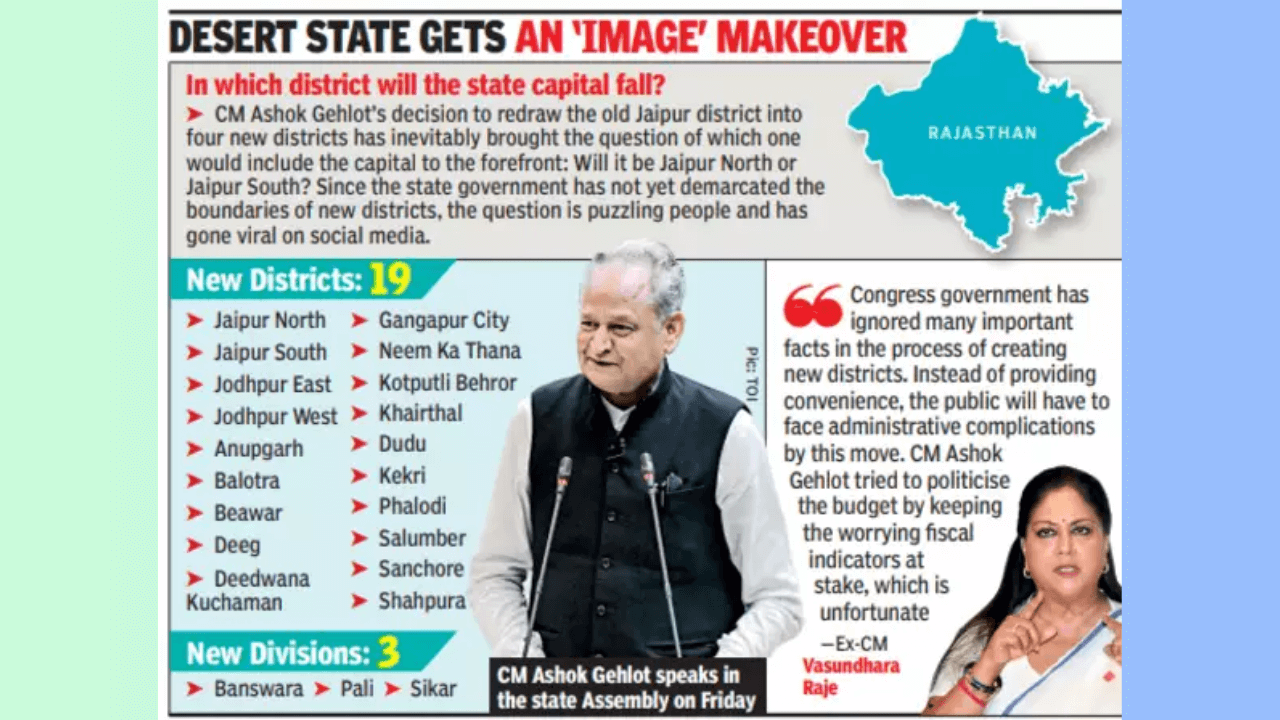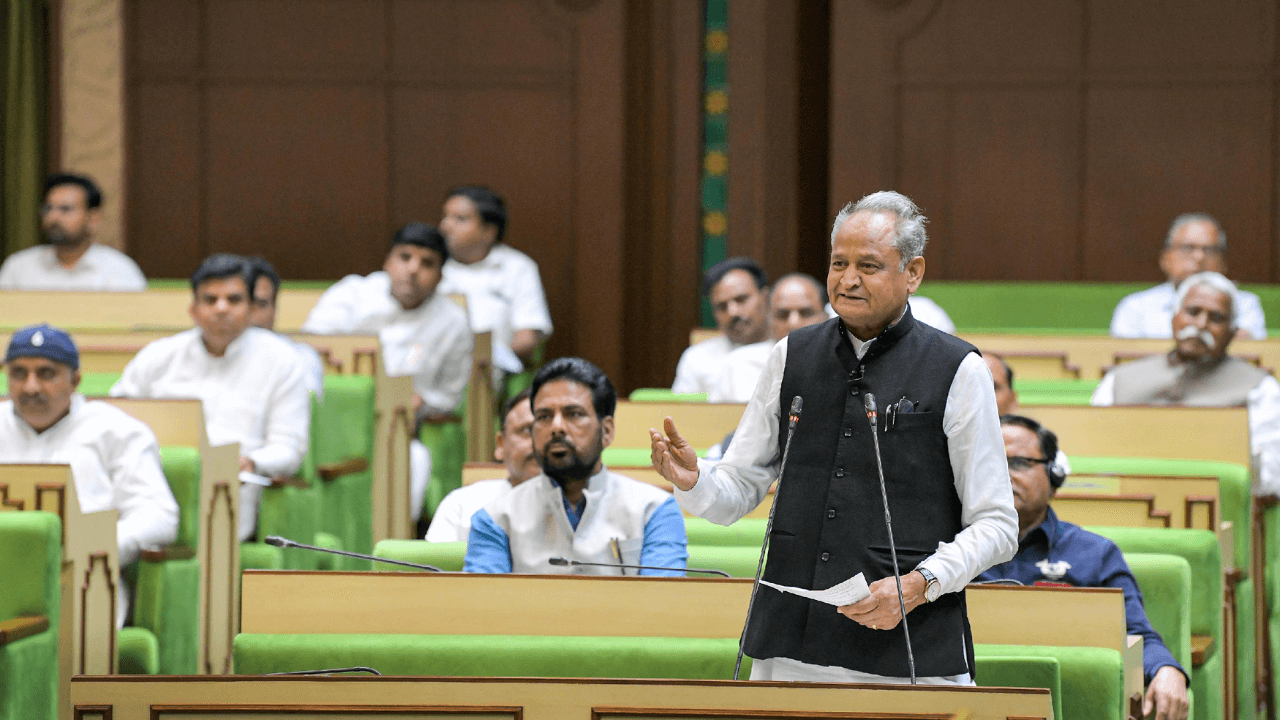In a move to enhance administrative efficiency and decentralization, the Rajasthan Government has given the green light to establish 19 new districts and 3 additional divisions. This strategic step aims to elevate governance and public service delivery. The state, which presently houses 50 districts and 10 divisions, previously functioned with 33 districts and 7 divisions.
Background and Context of 19 New Districts and 3 Divisions
This development traces back to the formation of a high-level committee in March 2022, led by retired IAS officer Ram Lubhaya. Tasked with providing recommendations for new district formations in Rajasthan, the committee’s efforts bore fruit with Chief Minister Ashok Gehlot announcing the creation of 19 new districts on March 17th.
Subsequently, feedback poured in from citizens, public representatives, and organizations concerning district boundaries. This input was relayed to the committee, leading to a reevaluation of the initial proposals. Following a meticulous review, the committee presented its revised report to the state government on August 2nd. The Cabinet meeting held on a Friday saw the endorsement of these recommendations.
Reshaping Territories of 19 New Districts and 3 Divisions

As part of this restructuring endeavor, Jaipur will be bifurcated into Jaipur and Jaipur Rural, while Jodhpur will be divided into Jodhpur and Jodhpur Rural. This strategic division seeks to streamline governance and optimize service provision at the local level.
Introducing Fresh Districts and Divisions
The new districts on the horizon encompass Apoongarh, Balotra, Beawar, Deeg, Didwana-Kuchaman, Dudu, Gangapur City, Kotputli-Behror, Khairthal-Tijara, Neem Ka Thana, Phalodi, Slumber, Sanchore, and Shahpura. The expansion of divisions to 10 will include Banswara, Pali, and Sikar.
Impact and Importance
This initiative to establish novel districts holds the promise of decentralizing authority and governance, rendering it more accessible at the grassroots level. The creation of smaller administrative units is projected to heighten service quality, reinforce law enforcement, and enhance overall governance. Notably, this transformation is poised to ease the burden on citizens who previously faced lengthy journeys to access government facilities and services.
In essence, Rajasthan’s forward-thinking decision to create new districts and divisions marks a substantial leap toward bolstering administrative efficacy, empowering local governance, and ultimately elevating the quality of life for its citizens.
- SIDBI Grade B Notification 2025 Out For 26 Manager Post
- SSC CGL Tier 2 Weightage of English and Quants, Check Here
- 7 Tips for Staying Motivated during SSC CGL Exam Preparation
- General Science Question for SSC CGL Exam, Attempt Here
- SIDBI Grade B Syllabus & Exam Pattern 2025, Download PDF

